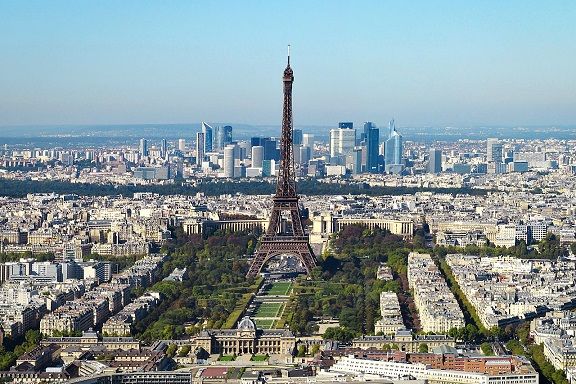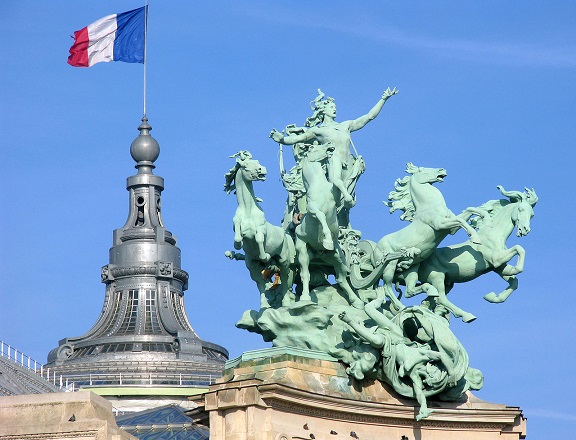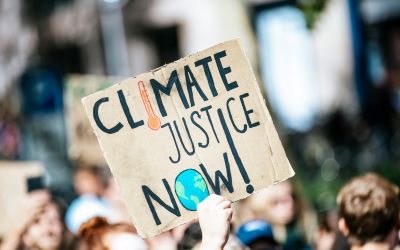COP21 and beyond – the form should reflect the content
COP21 is the 21st Conference of the Parties to the United Nations Framework Convention on Climate Change. Its origins go back to the Earth Summit in Rio de Janeiro, Brazil, in 1992 – a crucial step in international climate negotiations, with the signing of the United Nations Framework Convention on Climate Change (UNFCCC). It officially recognised the existence of climate change and human responsibility for this phenomenon. The Kyoto Protocol, which was adopted in 1997, set quantified greenhouse gas (GHG) emission reduction targets for developed countries for the first time. It entered into force in 2005 for the period 2008-2012.

A longer-term vision then became necessary. The Bali Action Plan of 2007 established a time-frame for negotiations to reach another agreement that would replace the Kyoto Protocol beyond 2012.
This agreement was to be drawn up in December 2009 at the latest, during COP15 in Copenhagen, Denmark. Although the parties did not manage to reach an agreement during this conference, they nevertheless decided on the common goal of keeping global warming below an increase of 2 degrees Celsius. Developed countries also committed to jointly raising US$100 billion per year by 2020 to help developing countries, as they too need to address climate change.
The Cancun Conference in Mexico in 2010 enabled concrete progress towards the 2 degrees Celsius goal through the creation of dedicated institutions to address key points, such as the Green Climate Fund.
The desire to take collective action led to the creation of the Ad Hoc Working Group on the Durban Platform for Enhanced Action (ADP), which brings together all countries, developed and developing, to work on a “protocol, legal instrument or agreed outcome with legal force” that is applicable to all Parties to the UNFCCC. This agreement should be adopted this year in Paris and implemented from 2020. In order to fill the legal vacuum, the Doha Conference in 2012 enshrined the pledge of several industrialised countries to a second Kyoto Protocol commitment period (2013-2020).
The conferences in Warsaw, Poland, in 2013 and Lima, Peru, in 2014 were crucial stages in the preparation for COP21 in Paris in 2015. For example, all states were encouraged to submit their national contribution in terms of GHG emission reduction before COP21. At the time of writing, 154 countries have published their contribution, representing nearly 87 per cent of GHG emissions. The European Union, for example, has committed to reducing its GHG emissions by 40 per cent compared with 1990 levels, by 2030. The UNFCCC secretariat published a synthesis report on these contributions on 30 October 2015.
The stakes
France will host and preside over COP21 at the Le Bourget site, to the north of Paris. It is an extremely important event, for it needs to lead to a new international climate agreement that is applicable to all and enables us to keep global warming below an increase of 2 degrees Celsius.
"The aim...is to build a climate alliance between the states, called the ‘Paris alliance’"
The aim of this conference is to build a climate alliance between the states, called the ‘Paris alliance’, that will enable us to contain the rise in average global temperature and adapt our societies to existing climate disruption. This alliance should make a pact with four components:
- The negotiation of a universal agreement, in accordance with the Durban mandate, establishing rules and mechanisms that are capable of gradually raising ambition to ensure the 1.5 or 2 degrees Celsius limit is respected.
- The presentation by all countries of their national contributions prior to COP21, in order to generate momentum and demonstrate that all states are making progress, depending on their national realities, in the same direction.
- Financial collaboration, which should enable support for developing countries and financing of the transition towards low-carbon, resilient economies before and after 2020.
- The strengthening of the commitments of civil society, non-state actors and the multi-partner initiatives of the Agenda of Solutions, in order to involve all members of society.
France’s role
In September 2012, the President of the French Republic, François Hollande, informed the United Nations that France, which is undertaking an energy transition for green growth, wished to host

COP21/CMP11 in 2015. France was officially designated as the host country in 2013. Laurent Fabius, the French Minister of Foreign Affairs and International Development, will act as president. Ségolène Royal, the French Minister of Ecology, Sustainable Development and Energy, will represent France in the European and UN discussion forums.
Under the authority of the Minister of Foreign Affairs and International Development and the Minister of Ecology, Sustainable Development and Energy, an inter-ministerial team responsible for negotiation and the Lima-Paris Action Agenda has been assembled under the leadership of Laurence Tubiana, the ambassador responsible for the negotiations.
The material and logistical organisation of the conference has been entrusted to a General Secretariat, for which I am responsible.
This is the largest diplomatic conference to be held in France since the signing of the Universal Declaration of Human Rights in Paris in 1948. In arranging this conference, the French presidency faces a two-fold challenge:
- Hosting, for two weeks, and in first-class conditions, thousands of delegates and observers under the auspices of the United Nations
- Acting as a facilitator between all parties, to draw viewpoints together and ensure that the agreement is adopted unanimously.
France is aiming to organise an environmentally responsible conference, for the form of this event needs to reflect its content. The site and organisation of the conference are in the process of obtaining ISO 20121 sustainable development certification through Bureau Veritas, which involves responsible management and setting up a ‘circular’ economy in terms of recycling, responsible catering, waste reduction, etc. The largest plenary conference room, which consists of reusable components, is built from wood from sustainably managed French forests; the welcome bags are made from recycled fibres; and water flasks will be provided which participants will be able to refill at the drinking fountains.
In addition, the Paris Conference will ensure the voice of civil society is heard thanks to the Climate Generations areas which, from their scale and proximity to the conference centre where the negotiations will take place, are a first in the history of COPs.








